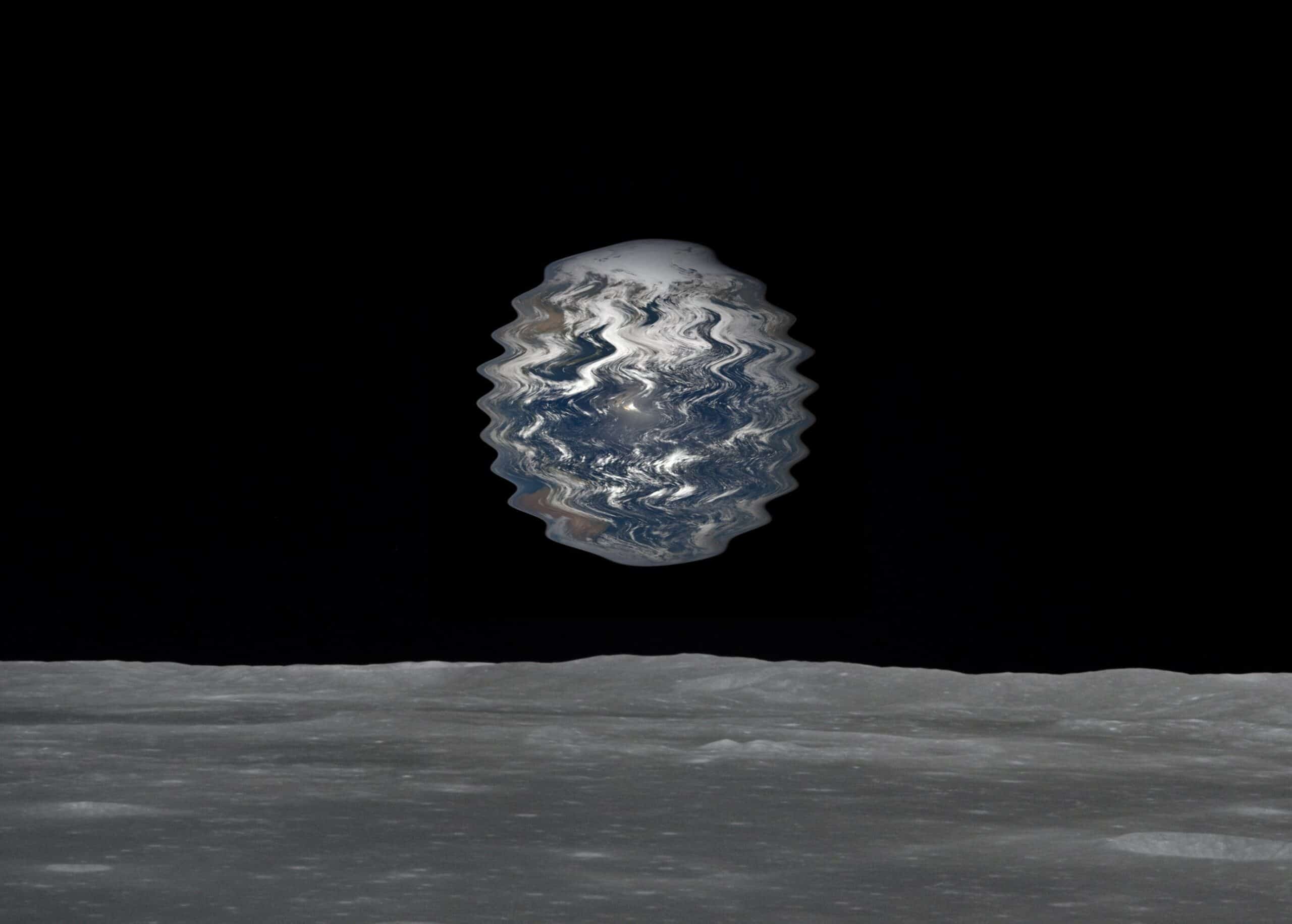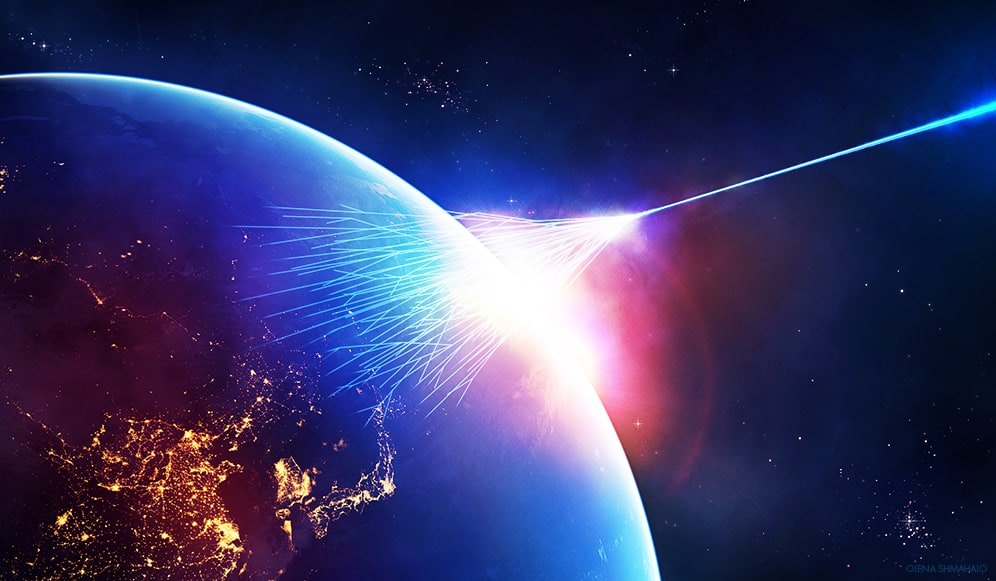
Earthquakes, the sudden and violent shaking of the Earth’s surface, continue to be one of the most devastating natural disasters. The recent tragedy in Turkey and Syria, where thousands lost their lives, serves as a stark reminder that these violent tremors can strike at any moment. If only there was a way to predict them even a few minutes in advance, so many lives could be saved.
Well, scientists from the CREDO project have been delving into an unexpected realm to uncover a potential predictor: cosmic radiation. This groundbreaking research, initiated by the Institute of Nuclear Physics of the Polish Academy of Sciences (IFJ PAN), has unveiled a strong statistical correlation between cosmic radiation and seismic activity.
The hidden connection between cosmic rays and earthquakes

At first, the notion that earthquakes and cosmic radiation are connected in any way may strike you as peculiar. But the physical foundations behind this correlation are entirely rational, says Dr. Piotr Homola, the coordinator of CREDO.
Eddy currents in the Earth’s liquid core generate its magnetic field, which, in turn, influences the paths of charged particles from cosmic radiation. So, if disturbances within the Earth’s core coincide with large earthquakes, they can alter the magnetic field, in turn affecting the cosmic ray particles detected on the surface.
CREDO scientists meticulously analyzed cosmic ray intensity data from various observatories, including the Neutron Monitor Database project and the Pierre Auger Observatory. They scrutinized changes in solar activity and seismic events worldwide, employing multiple statistical techniques.
Remarkably, a clear correlation emerged between the intensity of secondary cosmic radiation and the cumulative magnitude of earthquakes measuring 4 or higher.
“In the scientific world, a discovery is deemed significant when the statistical confidence level of corroborating data reaches five sigma, or standard deviations. In this case, we’ve surpassed six sigma, meaning the chance of this correlation occurring by chance is less than one in a billion,” said Dr. Homola.
But here’s the wildest thing about this intriguing link: The cosmic ray data had to be shifted forward by 15 days relative to the seismic data to reveal this correlation. In other words, cosmic rays could predict some earthquakes as much as 15 days in advance.
The CREDO (Cosmic Ray Extremely Distributed Observatory) project is an international endeavor, open to all, that harnesses the power of a virtual cosmic ray observatory. It collects and analyzes data from various sources, including sophisticated scientific detectors and even CMOS sensors in smartphones. Yes, your smartphone could be transformed into a cosmic ray detector with the free CREDO Detector app.
There is no way to predict earthquakes at the moment
The stakes involved in earthquake prediction are undeniably high. According to the World Health Organization, earthquakes account for nearly half of all deaths caused by natural disasters in recent decades. Providing timely warnings can save countless lives and mitigate the impact of these devastating events.
However, false alarms can lead to unnecessary panic, emergency costs, and undermine the credibility of the warning systems. Achieving accurate predictions while minimizing risks is a daunting task.
But despite what you might have heard or read elsewhere, “neither the USGS nor any other scientists have ever predicted a major earthquake,” says the United States Geological Survey (USGS).
Earthquake prediction is a complex puzzle with many missing pieces. And this puzzle may very well be impossible to solve.
While scientists possess a solid understanding of how earthquakes happen, determining the precise time, location, and magnitude of an impending quake remains an immense challenge. Several natural phenomena have been associated with potential earthquake precursors, such as increased radon levels in water sources or unusual animal behavior.
Other scientists have devised mathematical models attempting to simulate the movement of tectonic plates, but the complexity of the Earth’s crust and the need for extensive mapping hinder precise predictions. Recently, researchers have turned to machine learning, leveraging vast amounts of data such as seismology readings and surface deformation data. These efforts, known as nowcasting models, show promise but have yet to achieve the desired level of accuracy.
The bottom line is that these indicators have proven inconsistent and unreliable in accurately forecasting earthquakes. Some events occur without any observable precursors, while others may have unrelated causes. The suddenness of earthquakes doesn’t make things any easier.
Are cosmic rays a more promising avenue for earthquake prediction? Not likely. While the statistical link between cosmic radiation and earthquakes is undeniable, it remains enigmatic on a local scale. Location-specific analyses fail to expose the correlations observed globally.
So while cosmic rays may be indeed linked to earthquakes through some yet unknown mechanic, the correlation only predicts an earthquake event somewhere in the world — but it fails to tell us where exactly such an earthquake might occur.
Pinpointing the exact locations of cataclysmic events remains elusive, but this discovery has laid a foundation for a profound shift in seismic research. While an earthquake predictor that can’t be localized is essentially useless for disaster alert and response, who knows what hidden clues scientists might find next? The goal is to keep looking.
Other mysterious links between earthquakes and the cosmos at large
There’s even more to the correlations between cosmic radiation and seismic activity. They display astonishing periodicities that defy expectations.
Researchers have noticed a recurring pattern that peaks every 10-11 years, resembling the solar activity cycle. Curiously, this periodicity does not align with the maximum solar activity. Is this just some freak coincidence? Nobody knows yet.
Furthermore, cosmic ray and seismic data exhibit additional unexplained periodicities. Changes in seismic activity and the intensity of secondary cosmic radiation occur in cycles coinciding with the Earth’s stellar day, which lasts approximately 24 hours minus around 236 seconds.
This may suggest that external factors beyond our solar system may be responsible for these observed phenomena. One intriguing possibility is the Earth passing through a dark matter stream modulated by the sun and other massive celestial bodies within our planetary system. Our planet, with its vast magnetic field, could act as a sensitive planet-sized detector, perceiving phenomena that currently evade our limited scientific tools.
Regardless of the source of these periodicities, the link between cosmic radiation recorded on the surface of our planet and seismic activity is undeniably strong. This discovery opens up an entirely new realm of research, brimming with excitement and unexplored possibilities.
“If there is anything we can be sure of, it is that our observation points to entirely new and exciting research opportunities,” concludes Dr. Homola.


